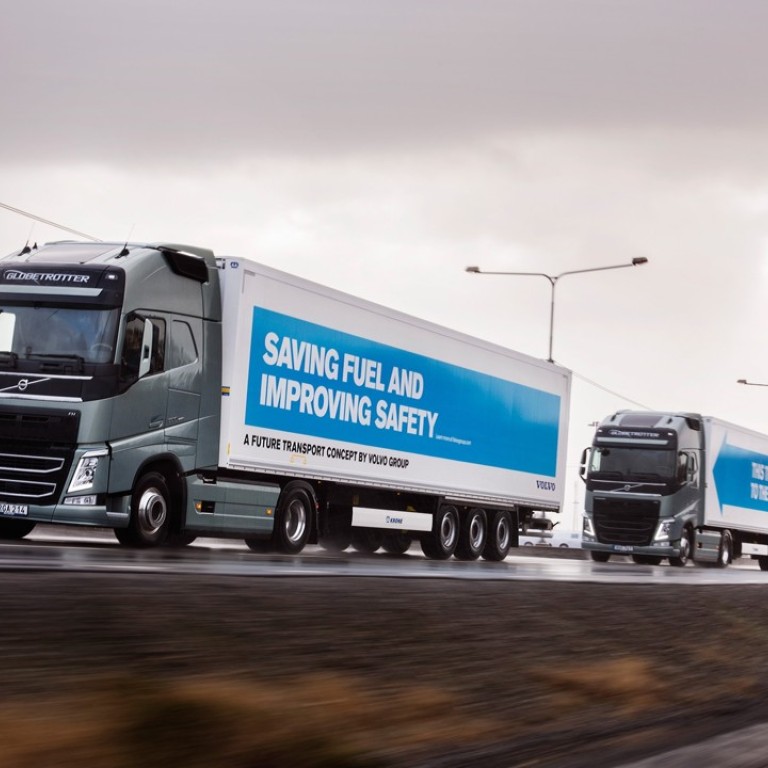
Semi-automated truck convoys get green light for trials on British highways
The British government has given the go-ahead for the first trials of convoys of semi-automated trucks on UK highways.
Up to three wirelessly connected heavy goods vehicles will travel in convoy, with acceleration, braking and steering controlled by the lead vehicle, a concept named platooning. Each truck will have a driver in the cab ready to retake control at any time.
The government is providing £8.1million (US$10.4 million) in funding for trials of the technology. The Department for Transport and Highways England have yet to confirm where the first tests will be carried out, but said they were expected on major roads by the end of 2018.
Proponents say platooning could cut both congestion and the cost of fuel for hauliers, although motoring organisations have voiced concerns about safety, particularly on motorways.
The Department for Transport said the technology could have major benefits, with vehicles in the slipstream using less fuel, lowering emissions and improving air quality.
Transport minister Paul Maynard said: “We are investing in technology that will improve people’s lives.
“Advances such as truck platooning could benefit businesses through cheaper fuel bills and other road users thanks to lower emissions and less congestion.
“But first we must make sure the technology is safe and works well on our roads, and that’s why we are investing in these trials.”
An earlier attempt to launch tests in the UK, heralded in 2016’s spring budget, stalled after a fruitless search for a HGV manufacturer to participate.
The platooning trial will be conducted by the Transport Research Laboratory (TRL), which has been involved in other tests of driverless vehicles, including passenger shuttles in Greenwich and autonomous delivery pods for online shopping.
The chief executive of TRL, Rob Wallis, said: “The UK has an unprecedented opportunity to lead the world in trialling connected vehicle platoons in a real-world environment.”
Similar trials have been successfully carried out in the US and Europe. An EU challenge in 2016 saw platoons of connected trucks travelling from Germany, Sweden and Belgium converge in Rotterdam.
However, motoring organisations fear platoons could obscure signs and exits on Britain’s crowded roads, particularly since the hard shoulders on converted “smart” motorways are now being used for regular traffic. The president of the AA, Edmund King, said the government had listened to their concerns and decided against a planned pilot scheme on the M6.
“We all want to promote fuel efficiency and reduced congestion but we are not yet convinced that truck platooning on UK motorways is the way to go about it,” King said. “We have some of the busiest motorways in Europe with many more exits and entries. Platooning may work on the miles of deserted freeways in Arizona or Nevada but this is not America.
“A platoon of just three HGVs can obscure road signs from drivers in the outside lanes and potentially make access to entries or exits difficult for other drivers. Even a three-truck platoon is longer than half a Premier League football pitch.”
The Road Haulage Association said it would be following the trials very carefully. Its chief executive, Richard Burnett, said: “Of course we welcome improvements to the way the road freight industry works and we understand the benefits that such a mode of operation would bring.
“However, currently the focus seems to be on the technology behind the system. Safety has to come first and it cannot be compromised. It is crucial that this element of the concept gets the highest priority.”
Highways England suggested platooning could make journeys safer. Jim O’Sullivan, the chief executive, said: “Investing in this research shows we care about those using our roads, the economy and the environment, and safety will be integral as we take forward this work with TRL.”

